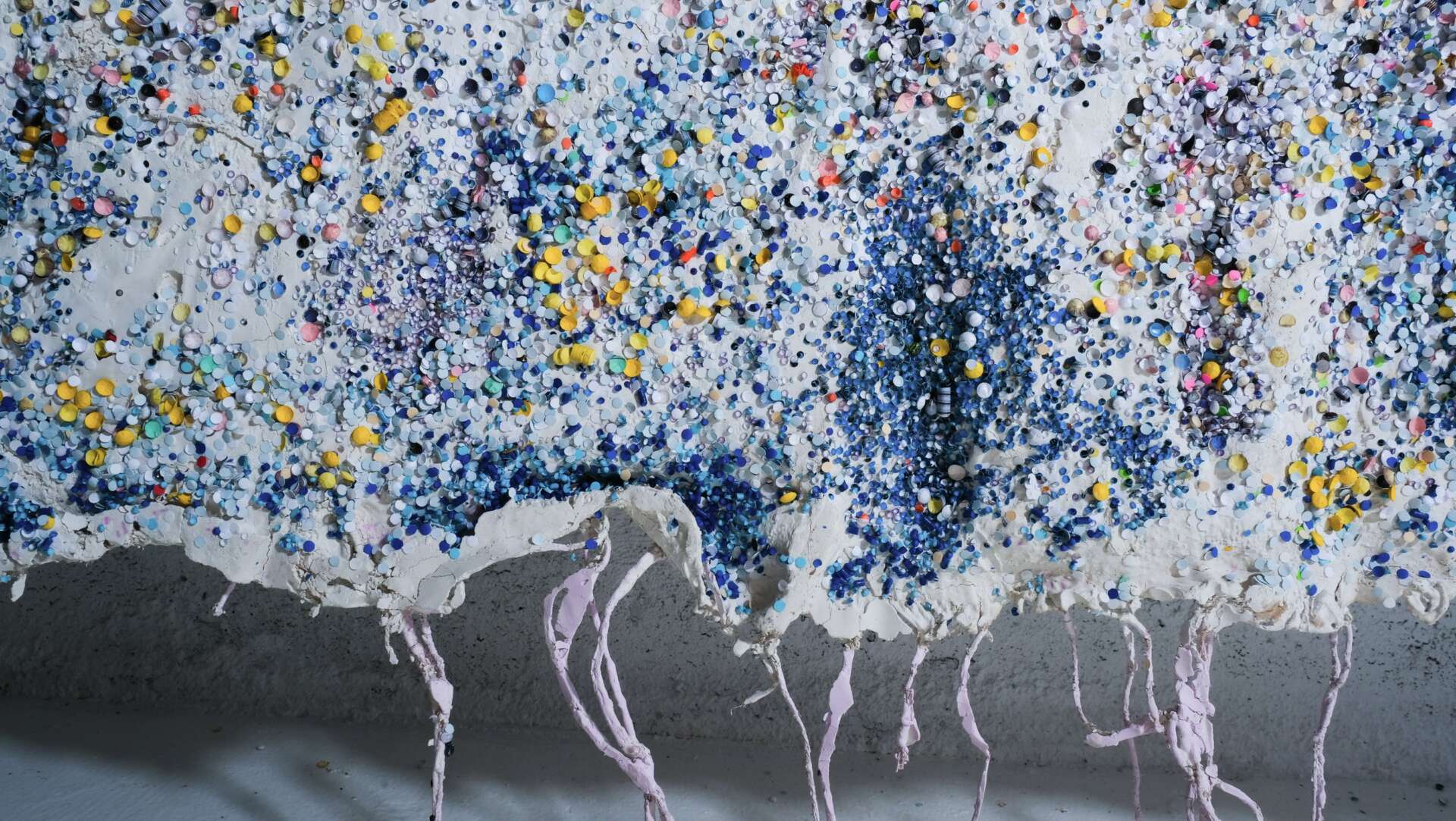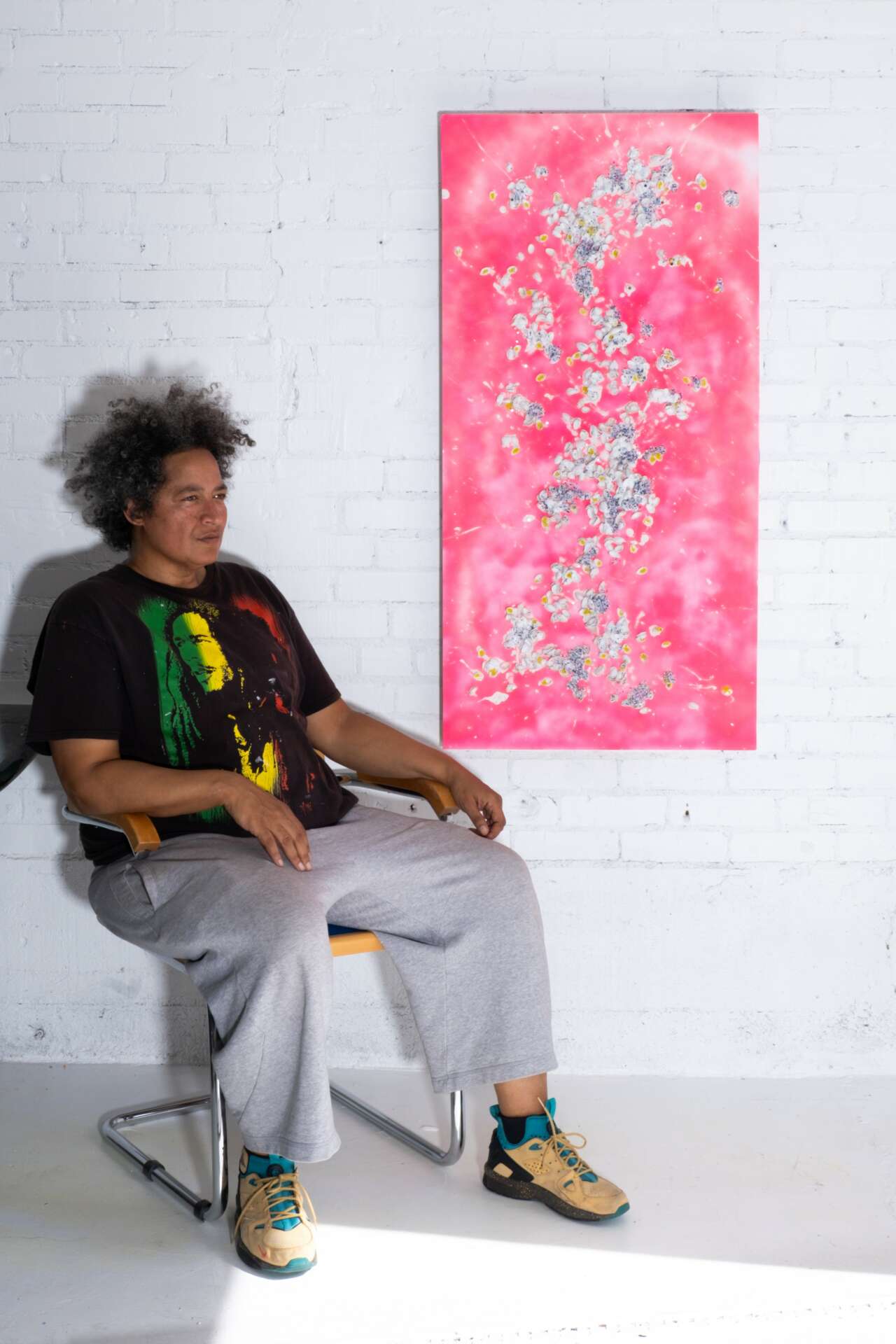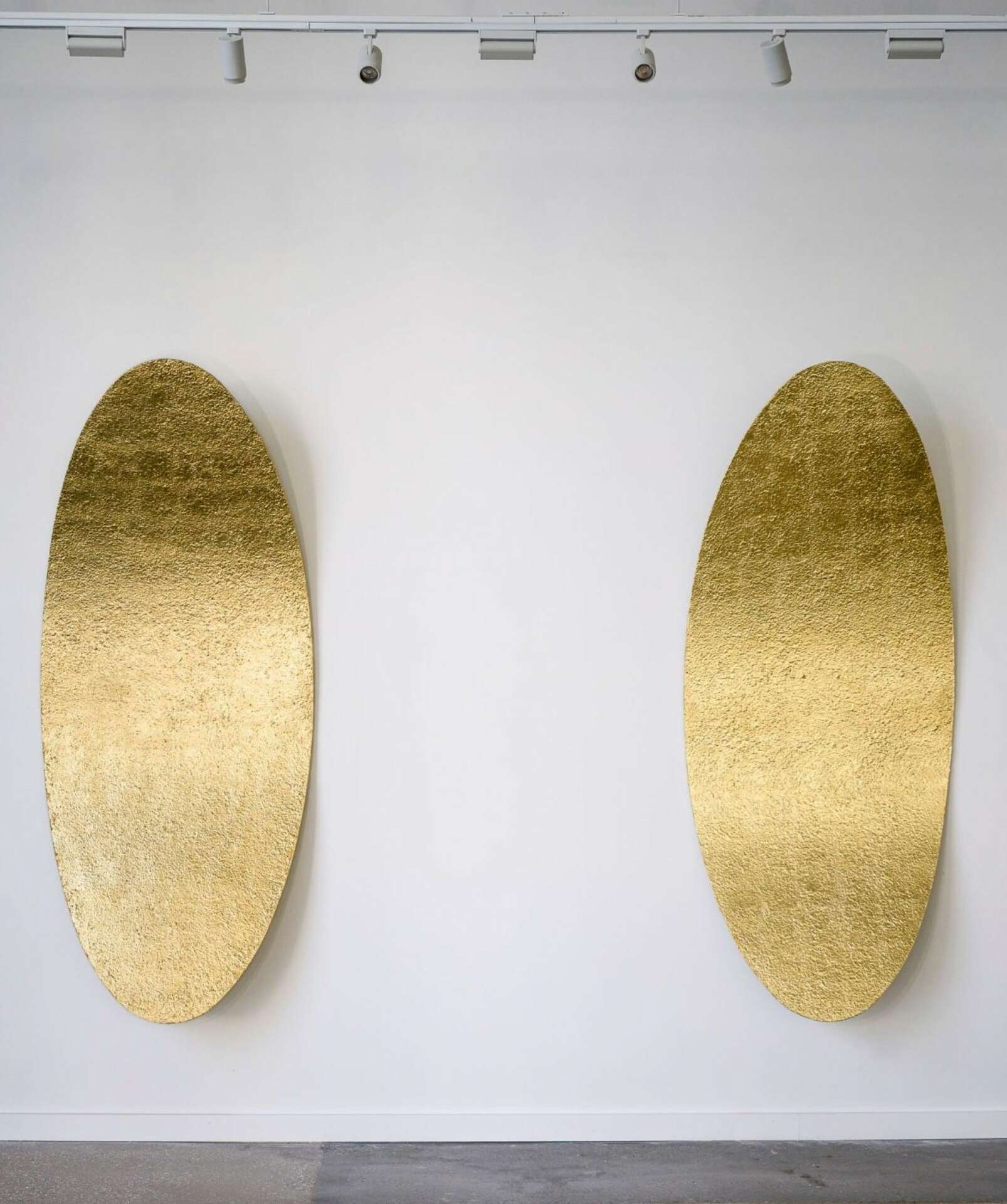We recently connected with Valincy-Jean Patelli and have shared our conversation below.
Valincy-Jean , thanks for joining us, excited to have you contributing your stories and insights. When did you first know you wanted to pursue a creative/artistic path professionally?
I decided to be a full-time artist ten years ago with a recipe I call desire and risk. I grew up in an artistic family where creative expression was a love language in my home and, at times, felt as if it was my birthright.
My father was a musician/composer, the youngest son of 13 children who pursued careers in music, fine art, and academics. Instruments were played daily, and political conversations about Black liberation were at the center of loud, smokey dialogues.
A reproduction of Herny Ossawa Taylor’s The Banjo Lesson hung on the wall of my grandparent’s home next to photographs of Martin Luther King Jr and JFK. I was introduced to works by Romare Bearden, abstract expressionist Ed Clark, and other notable and lesser-known black artists. I didn’t understand how profoundly these experiences and lessons handed down by relatives would play in the identity of who I am as a human, ultimately and directly inspiring my creative process.
I was a young person coming up in NYC in the early ’90s, and everything happening in the streets, particularly in the Black and Brown Queer communities, was incredibly informative and a direct lifeline. I learned how to navigate my identity as a queer black person and embrace an unapologetic sense of pride through the lens of queerness that held space outside of the binary. Collectively, the influence of my family and my chosen family helped me shape my artistic language into what I call Artifacts and Heirlooms.


As always, we appreciate you sharing your insights and we’ve got a few more questions for you, but before we get to all of that can you take a minute to introduce yourself and give our readers some of your back background and context?
My name is Valincy-Jean Patelli, and I am a mixed-media artist and sculptor. I live and work in Brooklyn, New York. I experiment with three-dimensional textures to create mixed-media works and sculptures. This nonlinear process allows me to blend stories from my ancestors with theoretical and cultural references from the African diaspora. Through environmental and historical allusion, my work explores the marginalization of Queer and Black American culture.
By creating multi-layered textures by transforming common materials into Artifacts and Heirlooms. I place particular importance on my choice of materials, such as gold, plaster, wood, burlap, canvas, and other non-traditional mixed media; intended to invoke radical and provocative stories that challenge this intersectional narrative of Queer Blackness.

Can you share a story from your journey that illustrates your resilience?
For the majority of 2023, I relocated to Phoenix, Arizona, transporting my studio to a bindery and mailing warehouse for seven months to create a new body of work for my first solo exhibition, I Will Tell You the Future opened at Unrepd in September 2023 in Los Angeles, CA. Several years back, I had the opportunity to visit the factory. During the tour, I noticed large bins of paper and paper-punched holes. I was fascinated by the different textures and sizes and the paper’s information. Working with discarded materials, I seek to find their purpose as evidence and function to create something new.
Working in a new environment presented creative challenges I could not prepare for. My residency was self-directed, and my resources were limited; however, I had great support from my art community outside of Arizona. The company gave me an open workspace inside the warehouse where multiple machines would run my entire workday simultaneously, embracing the sonic echos blended with my work patterns. I had no walls to hang the artwork on, but I quickly adapted by using industrial metal crates stacked on each other that assembled to 5ft x 14ft four side walls. This environment might seem chaotic from the outside looking in, but I found it exhilarating.
It’s essential to have new creative environments that challenge old ideas you may have about your process as an artist.

For you, what’s the most rewarding aspect of being a creative?
One of the most rewarding aspects of being an artist is leaning into experimentation and release. The process of building my work happens in fragments. My point of departure is my materials, listening to what they say and tapping into the desired direction, knowing that natural resistance develops between myself and the artwork. There’s a compromise that crescendos into a serenade. Once I reach the ensemble, the discussion of language roots itself.
I have a ritual of letting go of my artwork and offering the artwork to the viewer as a mutual exchange of time and energy.

Contact Info:
- Website: valincyjeanpatelli.com
- Instagram: https://www.instagram.com/vjpatelli_studio
- Other: https://unrepd.com/
Image Credits
Detail image 4- Samantha Allen Portrait image 5- Samantha Allen, Installation images courtesy of Unrepd


